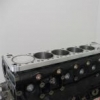The Haltech Platinum Pro Thread
Announcements
-
Similar Content
-
Latest Posts
-
By TurboTapin · Posted
Each province differs a bit but we only do mandatory vehicle inspections here for heavy vehicles (Think Ford F350 and up). Those inspections are done by mechanics that are approved by the government. Besides that, it's a free for all as long as the car looks stock. I asked because I love seeing how engineering differs from country to country. Here in Canada, all designs must be stamped and signed before they can be brought to fruition. (I.E Bridges, structures, Electrical panels, machines, literally everything shy of a wooden table) This can only be done by a professional engineer or professional engineering technologist. Both are protected titles, but the latter having more of a limited scope in what they can stamp. To become a professional engineer, you must complete a 4-5 year bachelors degree in your field of engineering, be part of an engineering order and undergo 4 years of apprenticeship, testing and mandatory continues education. Same story for engineering technologists, but a 3 year associates degree in some form of engineering technology will suffice. If you do not comply, or pretend you're an engineer or technologist, off to jail you go. If you stamp a design that fails, off to jail you go. If you stamp a design that fails and kills someone (I.E Bridge collapse) Off to jail you go for a very long time, your family will be ridiculed on the news, neighbours will surround your home with pitch forks and your dog will disown you. Same for specialised trades... Example Electricians must undergo 1.5 years of post high school education, 4 years of apprenticeship, testing and hold proper licences. It's for the best, but then we also wonder why we're so short on engineers and tradesmen haha -
Not currently, I'm at the school where we teach people to build bridges and other fun things that involve making, or breaking things
-
I have a friend who has used Chequered Tuning and CMS. Went to CMS when Chequered had a long wait time which is kind of the norm (for good reason). Was very happy - I'm pretty sure the very simple thing you're asking will be simple.
-
lol that caught up a year quickly! good to see you on the track again, hoping to do it myself one day
-
Nah he was mega organised, the sort of guy that put (almost) every tool back every day, it made trying to work out where things were up to possible. My shed needs a swedish death clean, I would have >20 part done jobs, its particularly hard to collect all required parts for a job ahead of time when you can't just pop into a shop and grab things
-








Recommended Posts
Create an account or sign in to comment
You need to be a member in order to leave a comment
Create an account
Sign up for a new account in our community. It's easy!
Register a new accountSign in
Already have an account? Sign in here.
Sign In Now